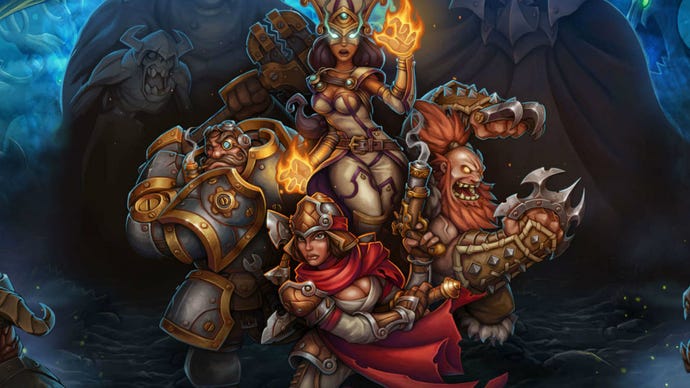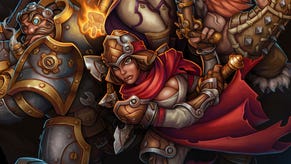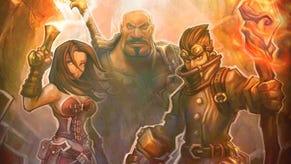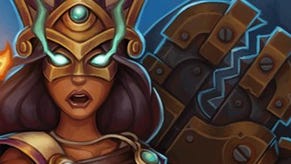Panic Button, Masters of the Nintendo Switch Port, Look Ahead to the Switch Lite and the Future
The studio behind those high-profile Switch ports prepares for 2020 and beyond.
This article first appeared on USgamer, a partner publication of VG247. Some content, such as this article, has been migrated to VG247 for posterity after USgamer's closure - but it has not been edited or further vetted by the VG247 team.
Panic Button has made a name for itself as the studio that can fit almost anything onto the Nintendo Switch. The work-for-hire studio has made a number of high-profile ports, with the one-two punch of Doom and Rocket League on Switch making folks take notice. It has followed that up with Switch ports of Wolfenstein II: The New Colossus, Warframe, and Wolfenstein: Youngblood. Sure, they've required significant cuts to run on Nintendo's hybrid platform, but for Switch owners and the publishers that want to reach them, the compromises are worth it.
Panic Button is more than the Switch though. It was founded in 2007, developing motion-controlled Wii and Xbox 360 Kinect games in its early years. 2013 saw the port that hinted at Panic Button's future: Injustice: Gods Among Us Ultimate Edition for PlayStation Vita. It wasn't the best port, but it bought most of the PlayStation 3 and Xbox 360 fight to Sony's portable platform. That truly began Panic Button's efforts to bring games to any and all consoles. This week sees the release of Torchlight 2 on Nintendo Switch, PlayStation 4, and Xbox One, all handled by the studio.
Torchlight 2 is an older game that required a small shift in Panic Button's efforts, but according to head of production Dan Hernberg, development only took around "eight or nine months". Most of that was about nailing down the feeling of Torchlight 2, which was built as a point-and-click Diablo-style adventure, and translating that over to controllers.
"The majority of the work wasn't necessarily-you know on other projects like Doom and Wolfenstein, the technical aspect of getting it rendering- most of it was spent overhauling the UI from the ground up so that it felt like it was a native console title. It was a challenge, but in a different way than some of our other things that Panic Button's known for. We think it'll really shine on all of the platforms," says Hernberg.
How Panic Button is Handling the Transition to the Switch Lite
The Nintendo Switch itself is about to see a major change in its marketplace with the introduction of the portable-focused Switch Lite. A number of games developed for Switch are aimed at the console's docked mode, meaning their performance and UI are meant for television presentation. This can sometimes leave the portable performance chugging along, or certain UI elements like text being too small to read. Hernberg says that the team is very aware of how users might play the current Switch, and are prepared for the Switch Lite.
"We definitely realize that a lot of people, maybe the majority of people, play their Switches on-the-go," he explains. "Whenever Panic Button works on a Switch game, portability, not only for gameplay but how the game looks, is super-important to us. Torchlight 2 is no exception. When we redesigned the UI from the ground up, we had the Switch in mind and obviously, the Switch Lite. We've already optimized it for the Switch Lite. If people have a Switch Lite and pick up Torchlight 2, it should feel really good, even though it's a smaller screen and there's less real estate. Most of us around the office when we're doing Switch testing, we're playing in handheld mode."
Panic Button spends a lot of time tailoring each title to new platforms, but that means the studio needs to be on the cusp of new hardware developments. The Switch Lite is coming this month, but we also sit on the eve of the next Xbox and PlayStation. Is Panic Button prepared?
"Internally, we're always looking for new technical challenges; it doesn't matter what platform it is. Obviously, we've had a string of recent successes, which is really a testament to how hard the team has worked. There's always new business opportunities, so [next-gen] is something we're looking forward to obviously. We love the niche that we're in now, but as I said, we're always looking for new challenges," he replies.

Hernberg explains that Panic Button doesn't want to "put our eggs in one basket". Whether that's Switch ports, or porting in general, the studio wants to be prepared for changes in the industry and that means having expertise in several different areas.
"A lot of companies, they get to a certain point of success, they put all their chips on black and then their game fails," he tells me. "We want to make sure that we're a little conservative in that approach. We are starting to look at what it would take to be a little more creative. We've fleshed out our art team even more. [Joe], our art director is here and he's built out a team over the last year. We have a new studio creative director, we're looking at more creative projects.
"We're known for engineering, but we're really trying to build up the other portions of the company, so we can take on any challenge. We're really interested in technical, but also design and art challenges. We look for the whole package now. Whether that's a port, a remaster, new IP. With the generation change, there's a lot of opportunity, so we're just trying to see what the right opportunities are for our company."
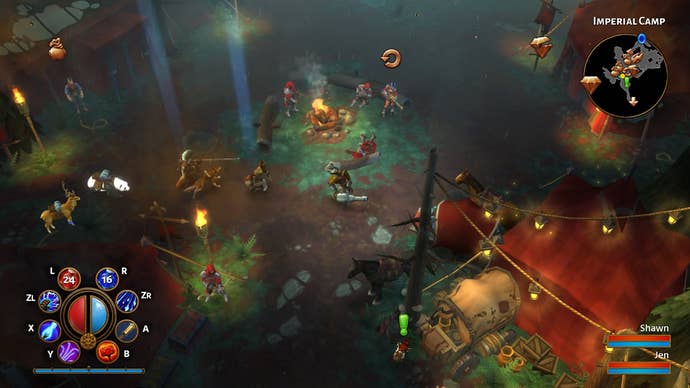
How Panic Button is Handling Crunch
Panic Button itself does a lot of work-for-hire, shepherding other studios' games to a new platform. This means it's rather high in demand, which shifts how the studio itself works. Panic Button is a smaller studio-hovering around 50 employees-full of veteran developers from around the industry. And unlike modern AAA development, there's no time to rest after shipping. This means Panic Button has its own approach to time management and crunch.
"We have a very mature studio, so work-life balance is really important. We don't really crunch at all, we try to work pretty strict hours; send people home and let them have a life," says Hernberg. "Most of our studio skews older. Because we're work-for-hire, we can't sprint, ship, and then take a break. There's always another contract, there's always another game. We can't burn ourselves out on one specific thing.
"That's not to say that people don't sometimes work longer hours because they're interested in a feature, but if there are people working longer hours, we try to change our schedule. We'd rather change the schedule or try to work with our partner to put more slack in there than to push people too hard."
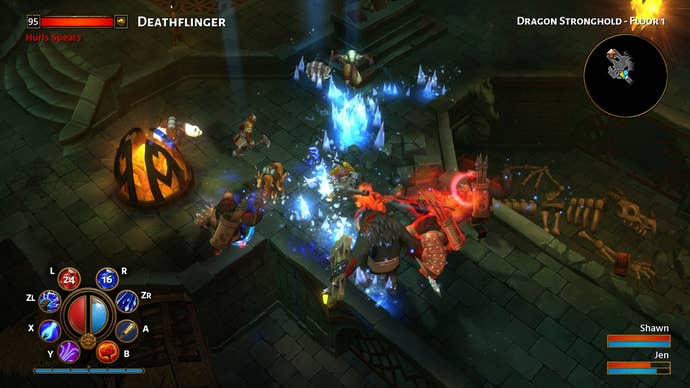
The future is always coming and the team at Panic Button are prepared. In an interview with USgamer last year, general manager Adam Creighton admitted that the studio wants to make its own games, something Hernberg concurred with. But ports will still be on the menu, potentially augmented by remasters, bringing PlayStation 4 and Xbox One games to their next gen counterparts. Panic Button is in demand.
"There's been a lot of really interesting, challenging projects and we're in a really unique spot right now where because we've had a little rash of success, people come to us. I feel like we turn down 10 projects for every one we take," Hernberg says. "Some of those are just for timing reasons, but some of the projects we're looking at now are very impressive. We'd love to do it all, but obviously there's something you're trying to balance. At any video game studio, there's a lot of creative people. That's something we're moving towards as a studio, projects that allow us to flex all those kinds of muscles."
